
Do you have a question about the Samsung C27H711QE Series and is the answer not in the manual?
| Color | metalic silver, silver |
|---|---|
| Screen Type | led |
| Tiltable | yes |
| OS Compatibility | windows |
| Screen Size | 27 inches |
| Aspect Ratio | 16:9 |
| Resolution | 2560 x 1440 |
| Native Resolution | 2560 x 1440 |
| Refresh Rate | 60hz |
| Horizontal Viewing Angle | 178 degrees |
| Vertical Viewing Angle | 178 degrees |
| Response Time | 4 milliseconds |
| Brightness | 300 candela per square meter |
| Contrast Ratio | 3000:1 |
| Synchronization | freesync (amd adaptive sync) |
| HDR | no |
| Built-In Speakers | no |
| Headphones Output | no |
| Power Consumption | 59 watts |
| Depth with Stand | 10.9 inches |
| Width with Stand | 24.2 inches |
| Net Weight without Stand | 11.7 pounds |
Ensure adequate space around the product for ventilation to prevent overheating.
Important warnings and guidelines to prevent injury or damage to the product.
Guidelines for storing the product to prevent damage, especially to the screen.
Instructions on how to safely clean the monitor panel and exterior.
Essential guidelines for safe use of power cords and electrical connections.
Warnings and cautions regarding the physical installation of the product.
Guidelines and warnings for operating the monitor safely and correctly.
Identifies and describes the main components and controls of the monitor.
Explains the function of shortcut buttons for quick access to settings.
Details the functions assigned to the monitor's control buttons.
How to adjust key picture quality settings like brightness and contrast.
Illustrates the ports and connections located on the back of the monitor.
Instructions on how to adjust the monitor's screen tilt angle.
Information on how to secure the monitor using an anti-theft lock.
Safety guidelines for safely moving the monitor to prevent damage or injury.
Step-by-step instructions for assembling and attaching the monitor stand.
Step-by-step instructions for safely detaching the monitor stand.
Guidelines for maintaining proper posture while using the monitor for comfort and health.
Instructions for installing necessary software drivers for optimal monitor performance.
Guidance on setting the monitor's resolution to the recommended optimal level.
Guidance on connecting and using a personal computer with the monitor.
Instructions for connecting the monitor via an HDMI cable.
Instructions for connecting the monitor via a DP-MINI DP cable.
Step-by-step guide for connecting the monitor to a power source.
Tips and methods for organizing and managing connected cables.
Optimizes picture quality for the environment, with various preset modes.
Adjusts the overall brightness level of the picture displayed on the screen.
Adjusts the difference between the darkest and brightest areas of the picture.
Controls the clarity and definition of the picture's outlines.
Adjusts the tint and color tone of the screen for desired visual output.
Enhances detail and vividness for low-resolution pictures.
Adjusts black level for improved image quality when using HDMI input.
Reduces blue light emission for comfortable viewing and reduced eye strain.
Optimizes screen settings specifically for playing video games.
Accelerates panel response rate for smoother, more natural motion in videos and games.
Allows adjustment of the displayed image size and aspect ratio.
Fine-tunes horizontal and vertical positioning of the screen image.
Sets the transparency level for the on-screen display menu windows.
Adjusts the position of the on-screen display menu on the screen.
Selects the language for the on-screen display menu.
Sets how long the on-screen display menu remains visible before disappearing.
Eliminates screen tearing and stuttering for smoother gaming experiences.
Reduces energy consumption by adjusting brightness levels.
Automatically powers off the monitor after a set period of inactivity.
Sets the monitor mode based on the connected input device (PC or AV).
Selects the version of the DisplayPort connection for compatibility.
Automatically or manually detects the input signal source.
Controls the response rate of buttons when pressed repeatedly.
Configures the behavior and visibility of the monitor's power indicator LED.
Restores all monitor settings to their original factory defaults.
Displays current input source, frequency, and resolution information.
Software to partition the screen into multiple sections for multitasking.
Outlines potential issues that may affect software installation.
Steps to take and checks to perform before contacting customer support.
How to use product functions to diagnose and test for issues.
Verifies if the display resolution and frequency are set correctly.
Troubleshooting steps for screen issues related to PC connection and installation.
Addresses common problems with the monitor screen display and power status.
Troubleshooting problems related to the connected input source devices.
Guide on adjusting the display refresh rate through graphics card settings.
Instructions on modifying the display resolution via operating system settings.
Steps to configure the monitor or PC for power-saving modes.
Provides general technical specifications and features of the monitor.
Lists supported display resolutions, frequencies, and timing standards.
Details cases where service charges may apply, even within warranty.
Lists conditions considered non-defects that may incur service fees.
Outlines types of product damage resulting from customer misuse or incorrect operations.
Covers other scenarios, including natural disasters and consumable component issues, that may affect service.
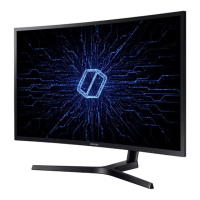

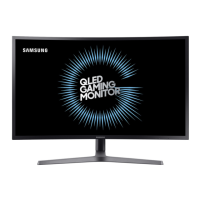
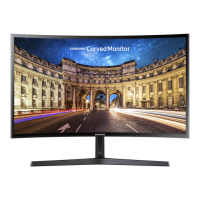
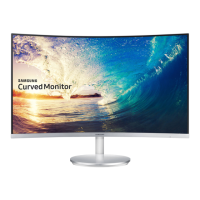


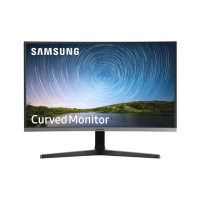
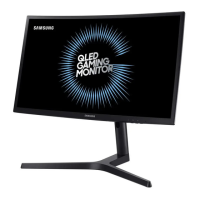
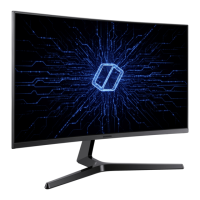


